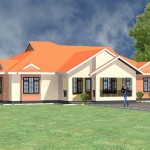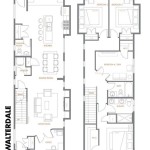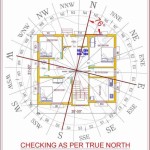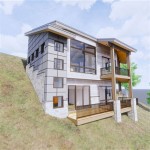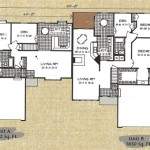Essential Considerations for Passive Solar Tiny House Plans
Tiny houses have gained popularity due to their efficiency, affordability, and environmental sustainability. Passive solar design takes this concept a step further by harnessing the sun's energy to reduce energy consumption while enhancing comfort. Here are some essential aspects to consider when planning a passive solar tiny house:
1. Site Orientation and Window Placement
Optimizing the placement of your tiny house on the site is crucial. Orienting the primary living areas towards the south or within 30 degrees of south allows for maximum sunlight exposure during winter months. Large, south-facing windows capture solar energy, while smaller, north-facing windows minimize heat loss.
2. Thermal Mass
Thermal mass refers to materials that absorb and release heat slowly. Incorporating thermal mass into your tiny house, such as concrete floors, tile walls, or masonry fireplaces, helps regulate indoor temperatures. During the day, these materials absorb solar energy and release it at night, providing warmth and comfort.
3. Insulation and Airtightness
Excellent insulation and airtightness are essential for minimizing heat loss. Choose high-performance insulation for walls, windows, and roofs. Sealing air leaks around windows, doors, and other openings prevents drafts and helps maintain a stable interior temperature.
4. Shading and Overhangs
To prevent overheating during summer months, incorporate shading and overhangs. Trees, awnings, or porches can block direct sunlight from entering the house. Overhangs above south-facing windows shade the house during summer while allowing sunlight in during winter.
5. Ventilation
Proper ventilation is crucial for maintaining fresh air and reducing moisture buildup. Passive solar homes rely on natural ventilation through windows and doors to circulate air. Incorporate cross-ventilation by placing windows on opposite sides of the house to promote airflow.
6. Passive Solar Appliances
Consider incorporating passive solar appliances into your tiny house. Trombe walls are heat-storing walls that absorb sunlight and radiate it into the living space. Solariums or sunrooms provide additional glazing and thermal mass, capturing and distributing solar energy.
7. Hybrid Systems
While passive solar design can significantly reduce energy consumption, it may not be sufficient in all climates. Consider incorporating hybrid systems that combine passive solar features with other energy sources, such as solar panels or a small wood stove, to ensure a comfortable and energy-efficient living space.
By considering these essential aspects, you can create a passive solar tiny house that maximizes natural resources, reduces energy usage, and enhances comfort. Whether you're a seasoned professional or a first-time homeowner, incorporating these principles into your design will result in a sustainable and eco-friendly living experience.

Tiny Eco House Plans Off The Grid Sustainable Houses

Great Floor Plan For Solar Passive Home In Google Search House Plans Narrow

Solar Tiny House Project On Wheels Idesignarch Interior Design Architecture Decorating E

Passive Solar Tiny House Design Trailer Free Plans Floor

Passive Solar Heating Tiny House Plans Living

Solaripedia Green Architecture Building Projects In

Passive Solar Home Plan At Alternative Heating Com House Design Homes Plans

Passive Solar Minnesota House On The Prairie Sustainable Simplicity
:max_bytes(150000):strip_icc()/__opt__aboutcom__coeus__resources__content_migration__treehugger__images__2016__03__mizu-extension-passive-2-1024x576-9352f6b62e344504bb54e5495fe5a405.jpg?strip=all)
A Japanese Style Tiny House That S Passive

Passivehaus Or Passive House Signature Sustaility Design Solar Plans

